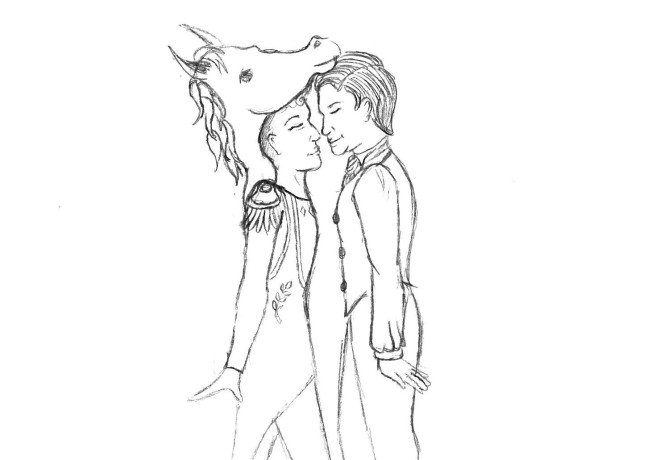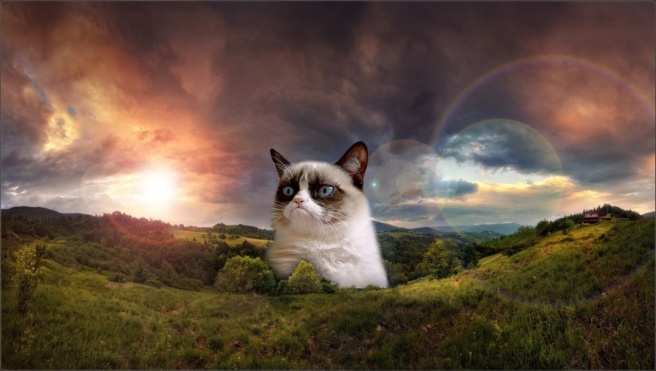
(I skipped the first two shows because I needed to sleep and eat some fruit. Sorry for this slightly incomplete round up, but let’s all remember self care is important during the stressful Fringe time. Although I have seen Break Yourself before and can vouch that it is good.)
First up, I watched Mish Grigor’s The Talk and it offended every single ounce of Britishness I carry. Which is to say, it’s brilliant. It’s about the sex life of your immediate family, and so deeply uncomfortable. As audience members step up to play family members, we learn that Mish’s mum likes it hard and her brother had a threeway one time. It sounds like it should be creepy as fuck but it’s actually full of warmth and love. Of course, I wanted to crawl out of my own skin and flee throughout – but that’s the point, isn’t it? Maybe the things that are uncomfortable to talk about are actually the most vital conversations we can have. Also: free cava *thumbs up*
(Course, I’m papering over the fact that I had to read one character – one with only one line – and I spent the ENTIRE SHOW fretting that I might be called on to read again, and therefore largely wishing I was dead and trying to sneak as much of the free cava as physically possible. Sometimes that thing where audience members join in works so well (here, for example), but my god I quietly hope that trend dies. I spent the hour between this and the next show recovering.)
The NDN Way looks AMAZING, but I do not have a single solitary clue what the fuck was going on. There was a voiceover track that I drifted in and out of (I got distracted from listening because the dude in it started playing the spoons like an absolute legend), so maybe’s that why I remain so utterly lost as to what it was all about. Ritual, I think, and ceremony, but that’s all I’ve got to stab at. But it looks so beautiful, full of colours and disco ball style lights and really, really great dancing.
(Here, I started flagging. I ate a Tunnocks tea cake and that helped.)
I spent quite a lot of Search Party’s Growing Old With You feeling a little bit… bored, really. Originally performed in 2011, a lot of the style and objects this piece employs have since become a bit common, I think: salt, marking out the space, repetition, cameras. It feels a bit ‘default live art’ to me. When I saw Herons at the Lyric in January, it felt really dated – like all the theatre I’d seen hadn’t been around to influence anything else. Growing Old With You, being a revival, feels like that; like I have seen the ripples of this work take effect, seen this practice embed in other artists, to such an extent that now the earlier work is the one that seems run of the mill.
(There’s barely a second to breathe before Paper Cinema kicks off.)
Paper Cinema’s The Night Flyer is technically impressive rather than dramatically gripping. The story is simple, the stuff of a children’s book, and it is lovely. It’s the sort of thing I would’ve gone mad for a few years back, but I’ve reached a cynical point where I can no longer be won with loveliness alone. It is remarkable, though, and I was a bit entranced by Irina and Nick sitting behind the camera, as they swooped and flourished the puppets with delicacy and dexterity – I just never found the pleasure in their story that I found in their movements to tell it.
(big up for the lightning fast turnaround between these two bits, because by this point I realised this was too many shows in one day and was ready to go home and cook dinner)
Dan Canham closes the day with 30 Cecil Street. It might be the perfect 10 year show for Forest. It was the last show performed in their old home on Bristo Place, and it is about a decaying, closed theatre and the memories it contains. It is gorgeous; a dance full of power, nostalgia and sorrow. It somehow manages to be both warm and haunting at the same time – like a ghost giving you a hug, and not dissimilar to his show about Fenland a few years back. There is a moment where Canham dances toward the front of the stage, and behind him are 3 or 4 of his shadow, each a towering stature, and it is so, so beautiful. Canham’s dancing is sculptural and abstract and so perfectly evokes emptiness, the sadness of a once bustling place now left desolate.
(On the bus back to central Edinburgh, I think on the day. Previously at Forest Fringe, there has been work that completely floored me – in 2013 it was I Wish I Was Lonely, in 2014 Hug stole my heart. This year, there’s nothing that really set me on fire, and maybe’s that why I gave some time to thinking about Forest itself. And because Forest is 10, a lot about it is to do with memory and history, and so legacy too, I think. There is a feeling that Forest are a bit bullet proof, PR wise – sitting on the fringe of the Fringe and offering up exciting work for free – and there is no doubt that should be celebreated.
But I have a few issues that I can’t escape. I should say that I have spent time at Forest only while it was at OOTB, in 2013, 2014 and again in 2016. In 2015 I skipped Fringe, but in a session of pining for Edinburgh noticed their 2015 website ‘About‘ section. It doesn’t make it easy to decipher what Forest is or does. Which is fine, but doesn’t necessarily align with what I perceive to be a key part of Forest’s ethos.
This year, ‘Accessibilty’ sits at the top of Forest’s website. It also features prominently in this interview about Forest, from last year. This year’s website has no ‘About’ page (their main site does have a better one, but their URL redirects to the 2016 site currently). I am in no way denying that Forest’s commitment to accessibility because it is of course amazing and brilliant that they offer BSL interpreted shows, are wheelchair accessible and support people who are visually impaired. But, accessibility is more than that. If the way you talk about yourself and your work is obtuse, you shut out those who cannot interpret it or do not already know it. I’ve never seen posters or brochures for Forest outside of Forest (could be wrong, willing to be corrected), and they don’t list in the Fringe guide – unless you already know about Forest, you’ll probably not hear about Forest. If you offer minimal explanation of yourself at your primary source of info (ie your website), then you don’t offer outsiders a path in.You might read about it, mind – Forest pull fair press coverage. But it’s a a shame if you live in Leith and don’t see theatre and then a load of awesome free stuff turns up on your doorstep and you don’t even know.
But Forest is potentially also shutting our people who want to be involved – who know about it, but can’t join in in certain ways. FF runs using volunteer FOH and technical staff. They do not receive regular funding, nor do they keep any of the donations following their shows, and so obviously it is a challenge to pay people. But, this is still an access issue. If you cannot afford to work for free for a few weeks then you cannot join the team at Forest for the ‘great opportunity’ on offer. As Fringe Whistleblower has taught us, working for free is common practice in August in Edinburgh – but if Forest aims to challenge the Fringe model, can it do so while also relying on unpaid labour like so many other venues?
Right now, in terms of its artistic output, Forest Fringe is thrilling. Its a game changer. But I can’t feel that their way of working entirely aligns with their ethos – there is nothing radical about unpaid labour, not much that encourages risk taking without talking about those risks. So when I see shows about the conversations we should be having, I feel like we might not be having one about the venue I’m sitting in as I watch, and I think we should. So, that’s why I was thinking this on the bus home.)
Out of the Blue Drill Hall







































